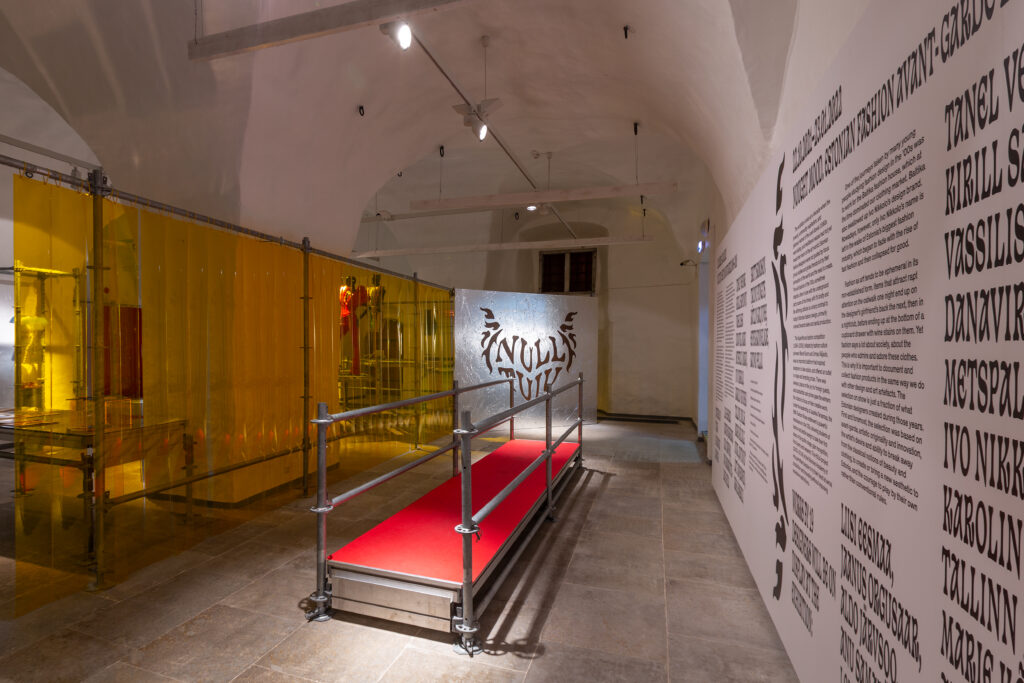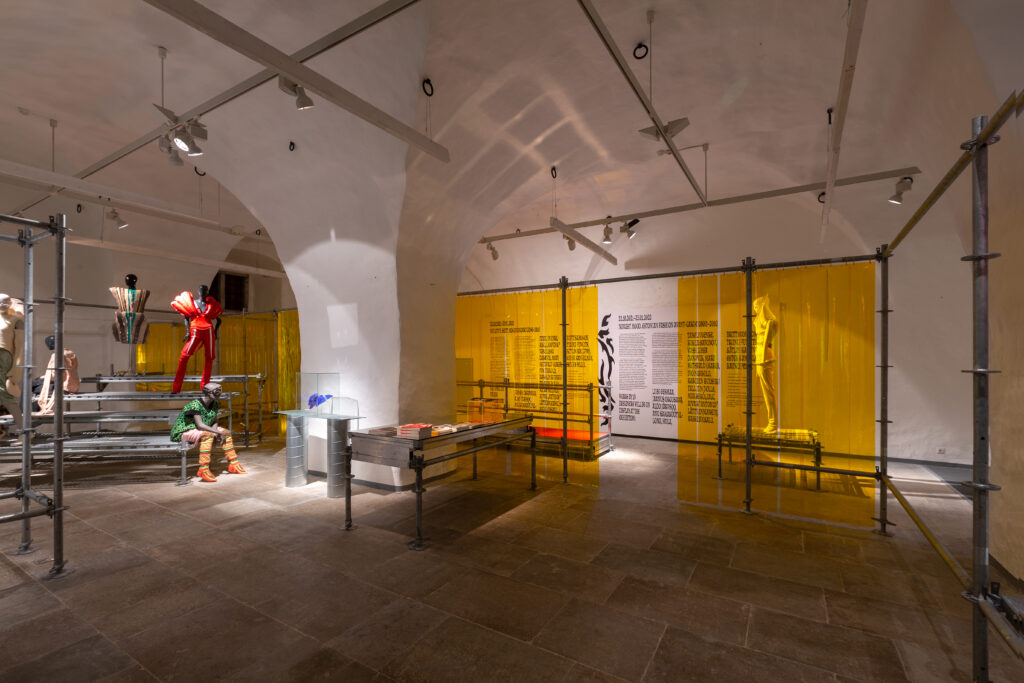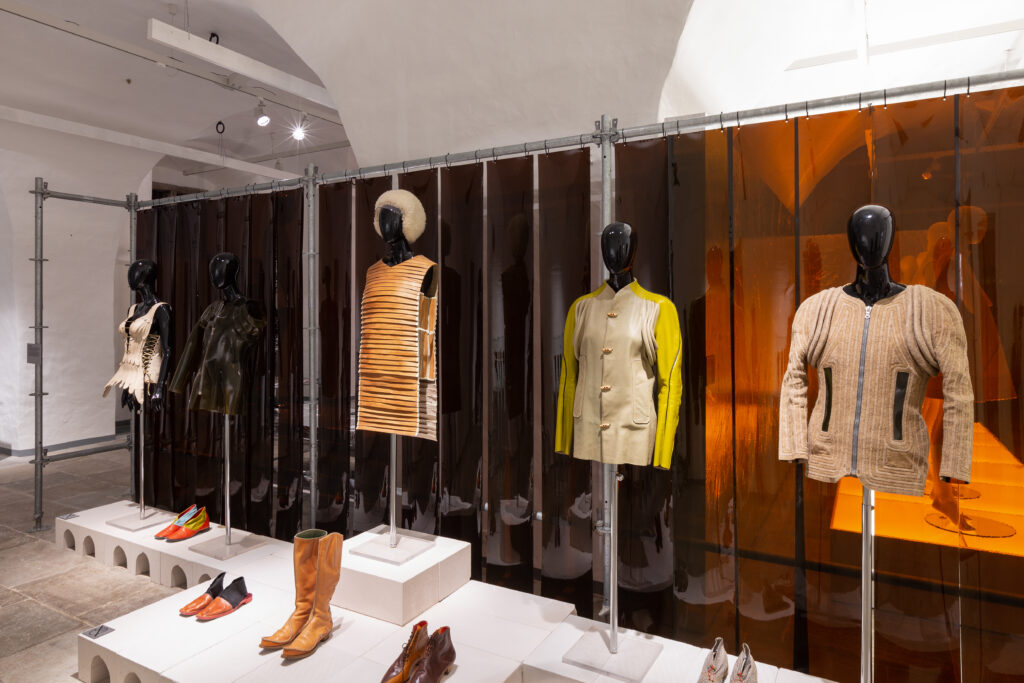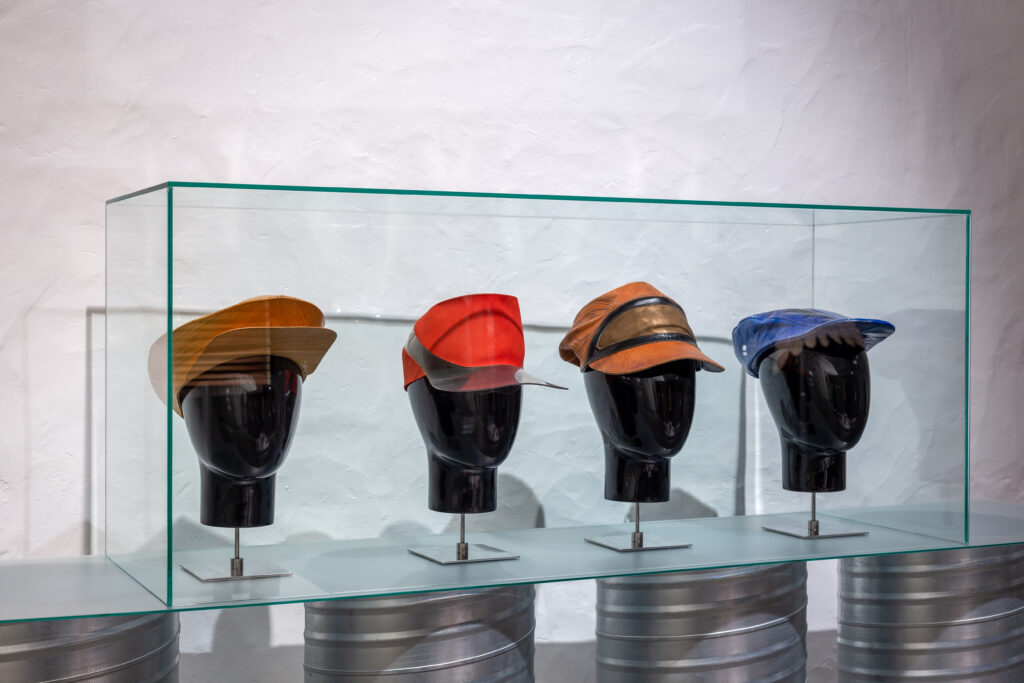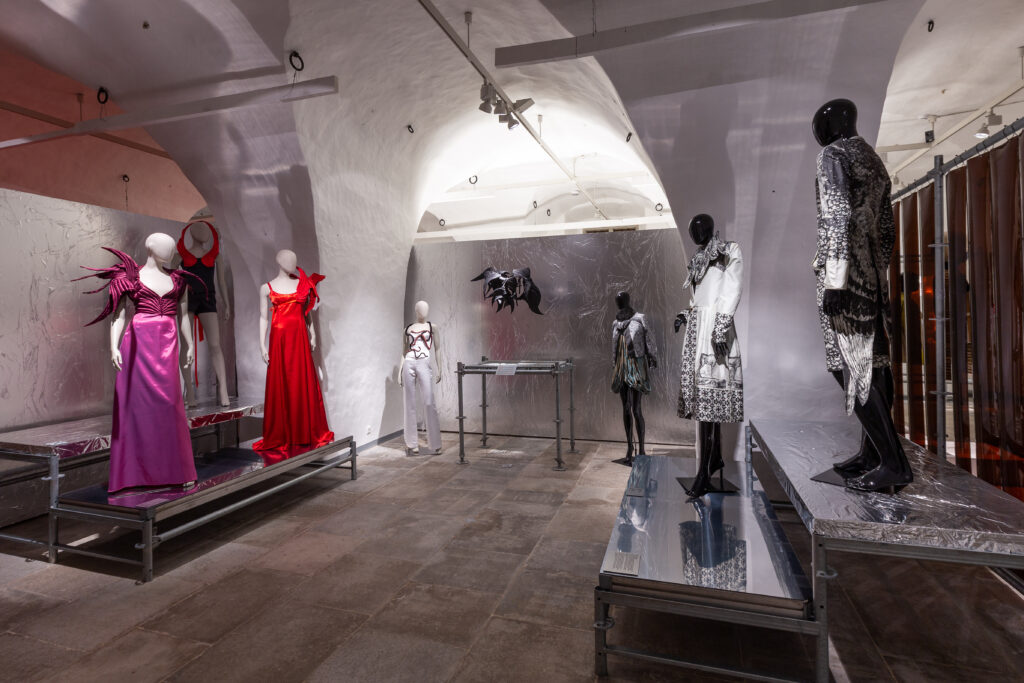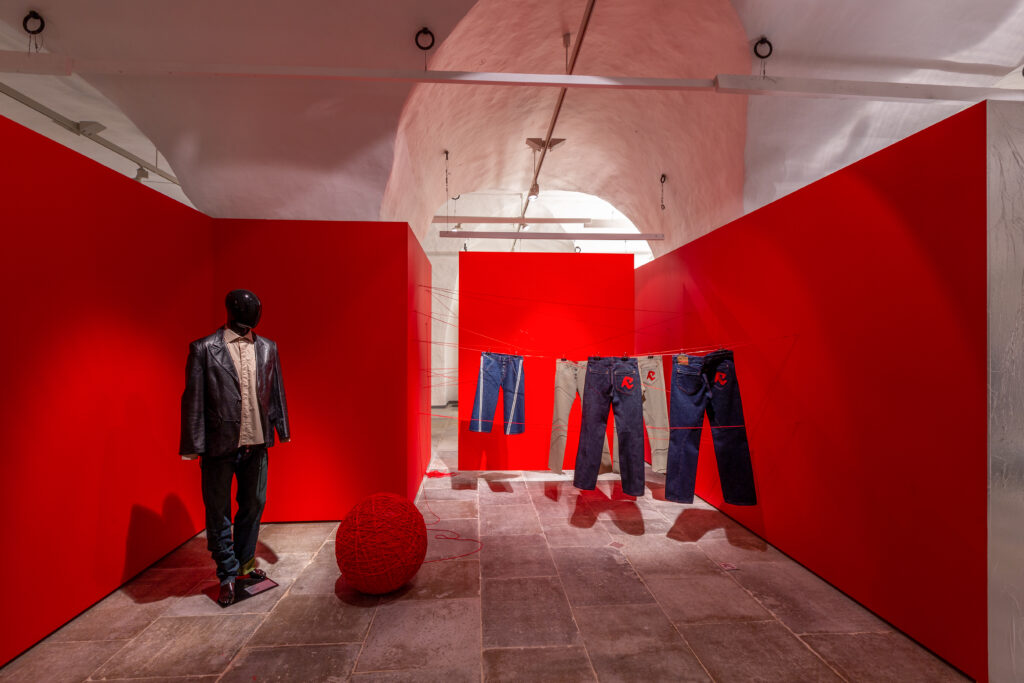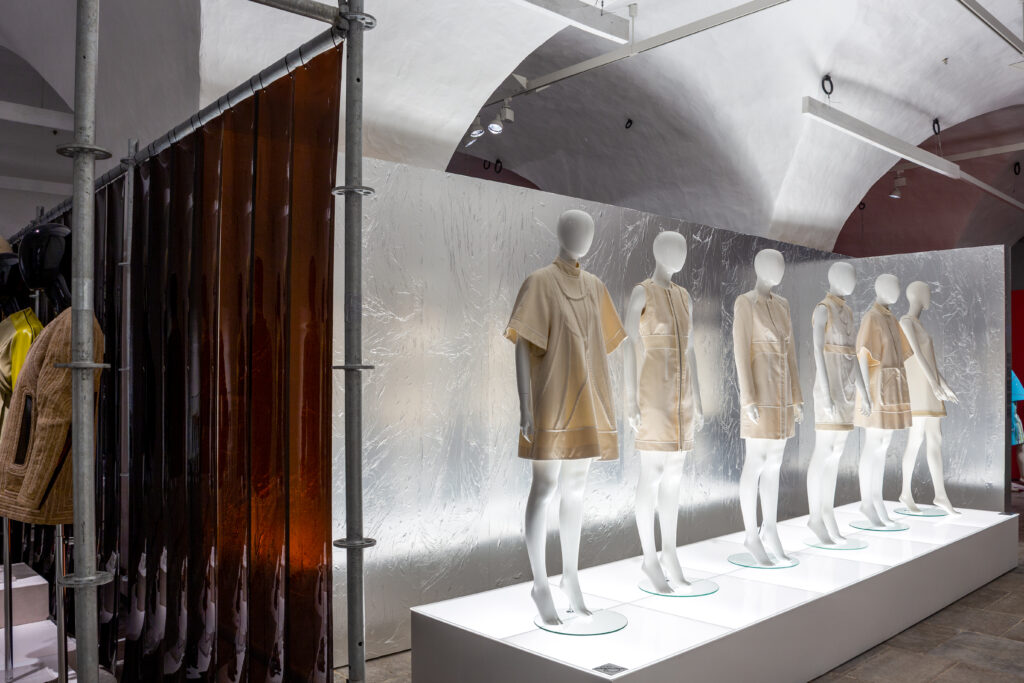Archive
Naught Mood. Estonian fashion avant-garde 2000–2010
23.10.2021-23.01.2022
Ground floor hall
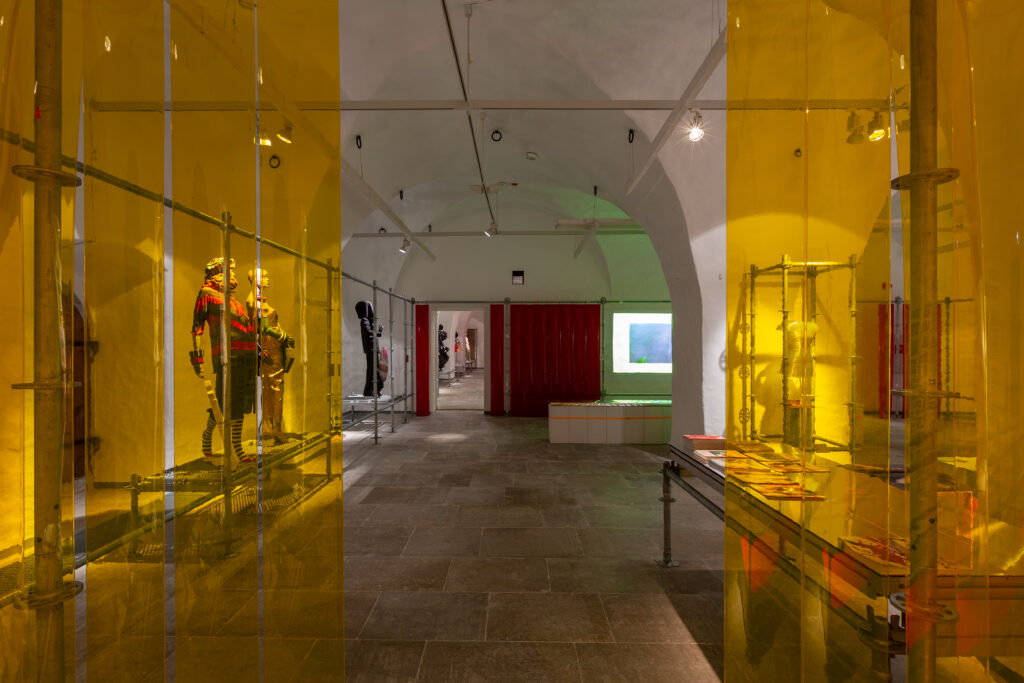
The exhibition looks at a decade when the poverty, commodity capitalism, and glamour-hatred of the post-Soviet 1990s were fading, and neoliberal values had not yet made their mark on the art world. Estonian fashion designers were not guided by focus group studies and global trends but by their perception of the world and the need to create. The wild fashion of the ’00s, sometimes infantile, often in tune with the underground party scene of the times, with it’s bratty and life-affirming attitude is a sharp contrast to today’s Estonian fashion design, primarily oriented towards sales and serial production.
The SuperNoova fashion competition (1998–2008), initiated by fashion culture pioneers Maret Soom and Urmas Väljaots, was an important platform that inspired designers to take action, and offered an outlet on stage and tempting prizes. There was always a place on the jury for foreign guests, and substantial cash prizes gave the winners the chance to focus on their creative work. Under the leadership of Jaanika Terasmaa, the ERKI Fashion Show underwent a powerful renaissance in the ʼ00s, allowing students of fashion and textile design to take their first steps on the public stage, gain recognition, find buyers and wearers. The HULA project (2002–2016) at the Estonian Academy of Arts permitted people to try their hand at serial production and branding without imposing excessive restrictions.
One of the journeys taken by many young people studying fashion design in the ʼ00s was to work for the Baltika fashion house, which at the time dominated our clothing market. Baltika also swallowed up Ivo Nikkoloʼs design brand. Nowadays, however, only Ivo Nikkolo’s name is left in the wake of Estonia’s biggest fashion industry, which began to fade with the rise of fast fashion and then collapsed for good.
Fashion as art tends to be ephemeral in its non-established form. Items that attract rapt attention on the catwalk one night end up on the designer’s girlfriend’s back the next, then in a nightclub, before ending up at the bottom of a cupboard drawer with wine stains on them. Yet fashion says a lot about society, about the people who admire and adore these clothes. This is why it is important to document and collect fashion products in the same way we do with other design and art artefacts. The selection on show is just a fraction of what Estonian designers created during those years. First and foremost, the selection was based on avant-garde, artistic originality and innovation, the artist’s desire and ability to break away from the classical notions of beauty and clothing, to create or bring a new aesthetic to Estonia, and the courage to play by their own rather than conventional rules.
Works by 19 designers will be on display at the exhibition: Liisi Eesmaa, Jaanus Orgusaar, Aldo Järvsoo, Anu Samarüütel-Long, HULA, Tanel Veenre, Kirill Safonov, Vassilissa Danavir, Maru Metspalu (Maru), Ivo Nikkolo, Karolin Kuusik / Tallinn Dolls, Marie Kõljalg, Aivar “Antonio” Lätt (Anjeand), Kris Lemsalu, Britt Samoson, Triinu Pungits, Kätlin Kaljuvee, Ester Kannelmäe, Rauno Pello.
Curator: Anne Vetik
Exhibition designer: Helen Sirp
Graphic design: Helene Vetik
Sound design: Sander Rajamäe, Rasmus Neljand
Video: Gert Põrk
Photos: Kristina Kuzemko
Gallery
Photos: Mari Volens
